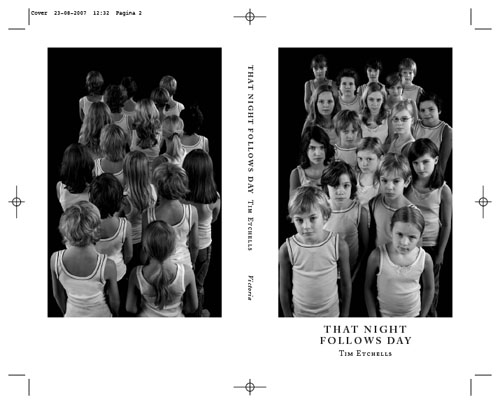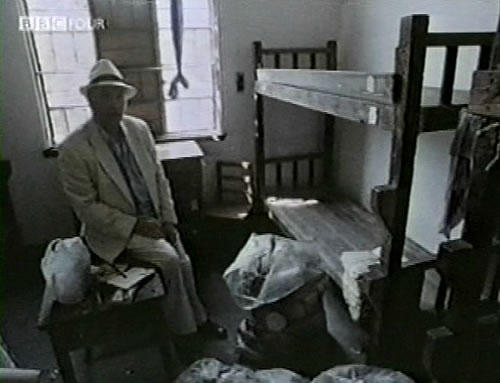After a few days you start to realise that only a city with some kind of confusion about time would have a giant metronome installed on a hill above it. All day that thing is ticking time out from the heights up there, the great pointless pointing arm of it ploughing the parched air back and forth, while the skateboarders clatter below it and the coachloads of tourists trudge the steps littered with glass and graffiti. Less a statement of true time that slow ticking arm, and more an obstinate insistence that this – its regular and continuos motion – is how the whole thing really should work, even if it does not do so in real, at least not here.
Wandering further up on the hills to the North side of the river you come across the Communist-era Museum of Technology, two large buildings, the first of which has its doors barred, a small sign announcing that it's closed for renovation and looking forward to your visit on its scheduled reopening 'sometime in 2009 or 2010'. There is a certain vagueness about the place, a state that somehow spills from the doorway to all aspects of its environs. Out front could be grand coutryard or free parking, it's hard to tell which and when you reach the lesser of the two Museum buildings the confusion deepens; since whilst it shows no evidence of life or activity it lacks any sign or barrier to indicate an actual closure.
A push at the heavy door (metal with glass too thick and too dirty to see thru) and you're in the entrance hall. Right there a guy fixes cables from his position up a ladder, whilst behind the glass screen of what once must have been an entrance booth another guy watches TV in the resentful manner of a nightwatchman contractually obliged to do Saturday afternoons in August. Ask him if the place is open and he'll nod a sideways and unlikely yes, before his cigarette-hand starts to trace the air with a route to guide you to the (relocated) ticket stand, his fingers trailing smoke to follow, shroud, lead or protect you. Cool in the shade of the building, at least as you go down the stone stairs and round the corner, you descend to the indicated place where a woman waits smiling at a table in a lower hall, a large space that has been filled with antiquated farming machinery. She's placed, as if by some centrifugal action to the very edge and corner of the room, pressed behind her ticket table which is stacked with a postcards and pendants, a notebook and a cashbox; the tools of the trade. 'Museum of Technology is basically closed' she says, 'only this part is open…' – gesturing around the hall and above her non-specifically to indicate the building in general – '…Agriculture'. It's already too good, or too bad to miss.
You pay and walk. There are a few famillies washed up in here too, those surprised by the closure, still clutching outdated guide books that do not sync with this reality, those who came with kids eager for the delights of a jet fighter or a replica satellite or a World War One tank or even a bus from the 50's and who are now left traipsing with subdued faces past the 1936 and 1937 models of something green and black or purple and silver that must once have optimistically ploughed earth or pulled trucks in service of some 3 Year Plan. It's this or the heat of the afternoon sun. You take the wrong route around the room – most recent tractors first, falling and/or strolling backwards, heading into the past, which is labelled for the most part only in Czech. History as a largely mute and illegible procession, the only text that comes in translation, with considerable monotony, is the museum mantra of Do Not Touch, generously offered in German, French, Itallian, Spanish, English and all caps.
You leave the tractor hall and head upstairs again, back through the lobby where construction work continues not so much apace as at its own pace, up past rooms and ambiguous corridors sealed off with incomprehensible signage and single ropes. Somewhere here you pass a few of the same lost tourist souls you saw before; there out in the stairwell, the German party of five, and in an indeterminate half-hallway somewhere nearby the bunch of English adrift with their toddlers. By now mums are seated with the strollers on the stone staircase, drinking water from bottles, rocking the youngest kids into something a bit like sleep, while fathers are pressing gamely on upstairs with the elder kids, ascending to circuit another room filled with farming equipment. These are desperate times.
At the door to each new room your ticket must apparently be checked again, each time by a different but similar ancient-woman-in-an-apron, each of whom is stood by an electric fan, their only defence against the heat which rises the higher in the building as you climb. Somehow each time producing the requisite ticket takes you longer though, as if the slip of paper shifts hiding place (front pocket, wallet, back pocket, bag) in reaction to the repeated scrutiny. Raised in different times and perhaps oblivious to these, the old gatekeepers will not waive you through. They are wise to subterfuges and tricks of those intent on slipping in without payment to see the inexplicable miniaturised non-functioning models of sugar and other refineries now half a century olf. Each of them takes stock of your ticket in her own way, according to her own logic, alternately friendly, bored, indifferent, polite, officious – one tearing off a corner, the next making a mark to index your entry in a notebook she keeps at her side, the next performing with considerable exactitude a bone-fingered tear in the ticket half way along its length. Hard to say if these fading employees are actual persons or experimental extensions of the building rendered as life, or to know if they are acting alone or in concert, or if their assortment of marks and interventions on the ticket are systems as such or just residual practices, habits or even private codes adopted to help pass or mark, scrape or peel away the surface of time. The walls sweat, trickle with dust. Once past the entrance scrutiny and into the rooms you're still under the old women's blank watch in any case and while for the most part they're content to track you with their eyes, they're also careful to shift position subtly at the far end of each hall, shadowing your moves with studied nonchalance so that agricultural objects do not eclipse or shelter you from their gaze for too long. As you stray to the further reaches of each hall – down into the zone shielded from sight by the massive model of an automated flour mill (Worlds Fair 1958) perhaps, or by the displays about pesticides – they are prone to appearing around corners with great sudden-ness and in total silence. All part of the service.
The final exhibit, defended with zeal by the oldest of the women comprises two rooms devoted to the largely uncelebrated but up to the minute 2008, Year of the Potato. You're faced with a grim display of facts, diagrams and photographs that line the walls, walls which themselves have been decorated with crinkled mud-brown paper to somehow suit or illustrate the theme. Here on the third floor you are, somehow by a miracle of amateur set-dressing, underground. Hard to reconcile this room with 2008 in any way, or to remotely feel remotely at ease in its antechamber of looped black and white videos info-dumping without subtitles on the topics of Potato Farming through the Ages. Is this a contemporary exhibit about the present of Agriculture done in the style of the past? Or a past exhibit that attempts a quasi-futuristic take on an important root vegetable? You can't tell and the family – seated, listless, zombie-like, in front of the TV – are giving no clues, receiving data from the screen with an indifference and patience that dead men might envy or recognise. Time to get out. The Colorado beatle must be feared at all cost. The entrance hallway is deserted as you exit, cables trailing to the ladder, the TV in what was once a booth playing out its unrecognisiable dramas to no audience. You're gone, your presence another kind of history.
It's only later, much later, when you are down and off the hill, that you realise the metronome which counts time around here is stopped in the evenings and that it, as well as time itself, only gets back to work in the mornings.


